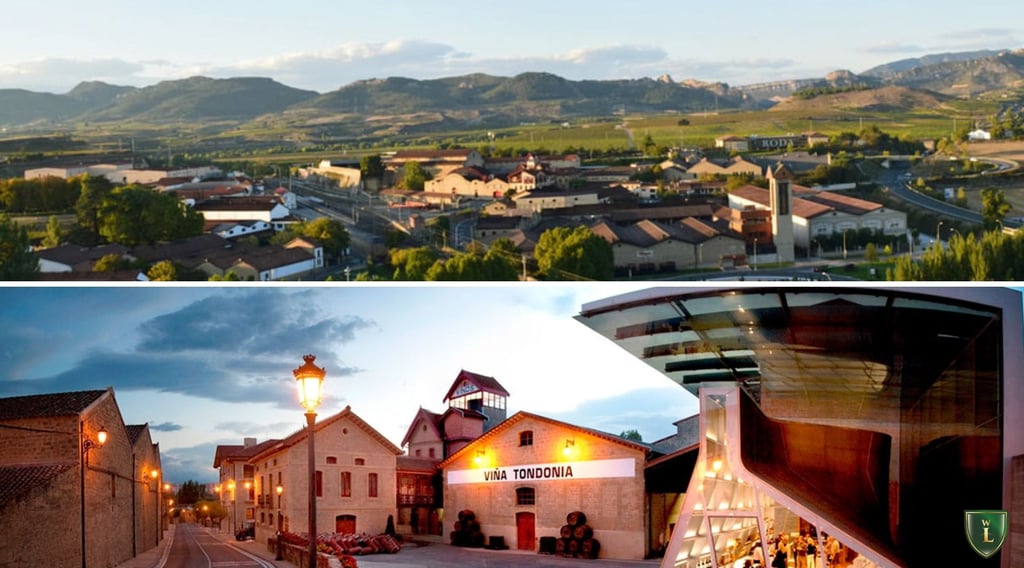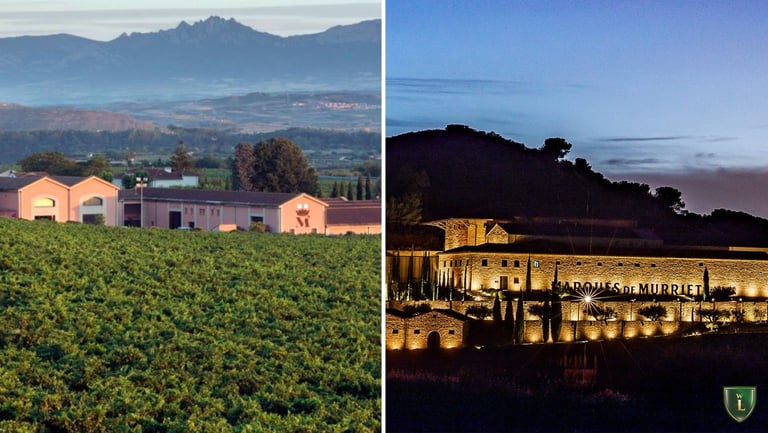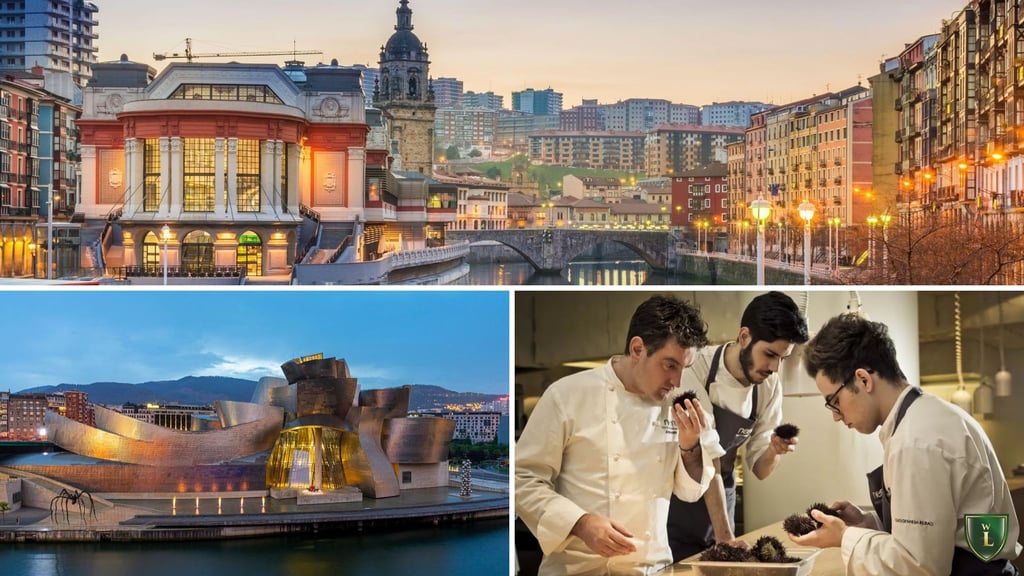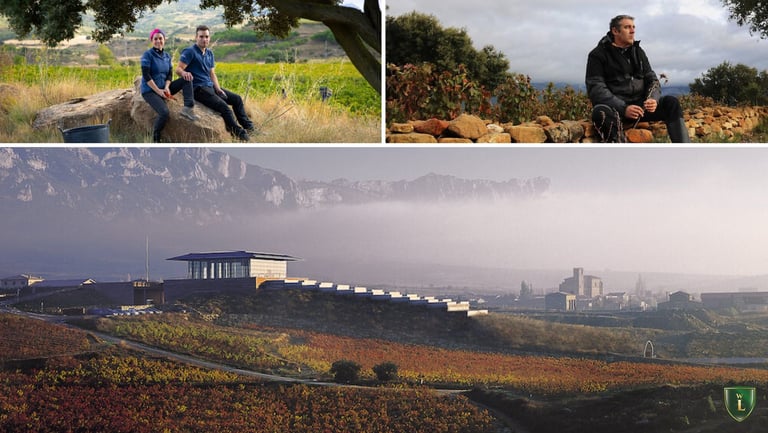
Roots, Architecture and Soul
A Journey through Rioja and Bilbao
TRAVEL AND WINE
8/27/20254 min read
Where History Is Breathed and Wine Tells Its Tale
Some regions are not only explored through the senses — they are remembered with the soul. Rioja and Bilbao are precisely that. A territory where wine is not only tasted, but also walked, inhaled and contemplated. A perfect balance between grand historic estates, visionary small producers, vineyard-covered hills shaped by centuries of viticulture, and a city that has reinvented itself without losing its identity.
Bilbao: Between Steel, Art and Gastronomy
The Basque city surprises visitors with its contemporary architecture, reimagined industrial elegance, and vibrant energy. For those beginning their wine journey here, Bilbao offers an exquisite first taste: world-class gastronomy and a visual culture that sharpens the eye.
From the creative minimalism of Nerua, the Michelin-starred restaurant within the Guggenheim Museum, to the authentic warmth of La Viña del Ensanche, where jamón ibérico and local wines are served without pretence, Bilbao is savoured as much as it is explored.
Rioja: Rolling Hills, Vineyards and Liquid Memory
As the road winds into the heart of Rioja’s wine country, the landscape begins to shift: poor, stony soils, gentle hills, and villages that seem to whisper stories carried by the wind.
Grandeur and Intimacy: Two Visions of Fine Wine
Marqués de Murrieta
Majestic, technical, impeccable. A visit to Marqués de Murrieta is a journey through precision, architectural harmony and elevated gastronomy. Every space reflects contained grandeur and a well-crafted narrative. The restaurant’s pairing menus celebrate the structured elegance of its wines in a setting that breathes heritage and modernity.
Marqués de Vargas
Just nearby, and with a different approach, Marqués de Vargas offers a warm, professional hospitality. The guided visit allows for an authentic immersion into the vineyard, the process and the people behind each label. It’s a winery that, without compromising elegance, privileges connection and emotional experience.




Barrio de la Estación: Industry, Heritage and Legend
Beyond its architectural beauty and prestigious wineries, the Barrio de la Estación holds a fundamental symbolic and strategic role in the history of Spanish wine. In the 19th century, this small district in Haro became a hub for commerce and distribution thanks to the arrival of the railway.
The railway link allowed Rioja wines to travel beyond their local markets, reaching Bordeaux at a time when phylloxera had devastated French vineyards. It was here that large ageing cellars were built, Bordeaux methods adopted, and oak and time became pillars of a new winemaking identity.
Today, walking through the Barrio de la Estación is like tracing the foundations of an entire industry. The wineries preserve their original façades, underground cellars and cooperage halls. But they have also evolved, offering contemporary experiences that honour and reinterpret their legacy. Nowhere else in Rioja do history and innovation coexist so effortlessly.
López de Heredia
Founded in the 19th century, it remains a benchmark of authenticity and timelessness. Its wines, its spaces, its ageing rhythm — all form part of an aesthetic that resists trends and speaks with quiet strength.
Muga
A delicate balance of tradition and evolution, Muga seamlessly integrates quality, scale and global reputation. It has upheld a coherent brand voice through generations without losing sight of its roots.
San Vicente de la Sonsierra: Stone, Silence and Vineyard
San Vicente requires no grand introductions. It is one of those places where everything unfolds gently, but leaves a mark. Its castle, medieval bridge, stone houses and ancient church are not mere postcards — they are silent witnesses to a region that learned to work with what the land offers, without embellishment.
The surrounding vineyards are old, many bush-trained, set on poor soils exposed to wind and sun. The harsh climate, elevation and orientation give birth to structured, age-worthy wines that speak with authority — slowly, but clearly.
In recent years, small producers like José Gil have reawakened appreciation for this landscape by working with minimal intervention, seeking purity, and allowing the vineyard to speak for itself. San Vicente is moving because it is genuine. Because it needs only to be faithful to its own nature.
Wine Rituals: Tapas and Tradition
Gastronomy and wine are inseparable in Rioja. Whether in a classic village tavern or hopping from bar to bar on the legendary Calle Laurel, each tapa finds its perfect glass, and each glass, its story. In Rioja, pairing is not a technique — it is a way of life.


Baigorri: Architecture that Descends into the Heart of Wine
Built into the side of a mountain, Baigorri is a vertical winery experience: seven descending underground levels where gravity, design and silence guide every step. The barrel cellar, often cloaked in fine mist, creates an intimate, almost sacred atmosphere. From here, doors open to a restaurant of refined cuisine, perfectly aligned with the wines.
Its photography exhibitions and architectural visitor centre invite guests to linger, look, and discover.
The Emotion of the Small: Identity Without Pretence
Artuke
With a modern perspective on soils and micro-zones, Artuke crafts vibrant, precise, honest wines. A small winery that thinks big.
José Gil
From San Vicente de la Sonsierra, José Gil brings forth a deeply personal approach to winemaking — minimalist, expressive, and deeply rooted in place. His wines move not through boldness, but through quiet intensity and depth.



